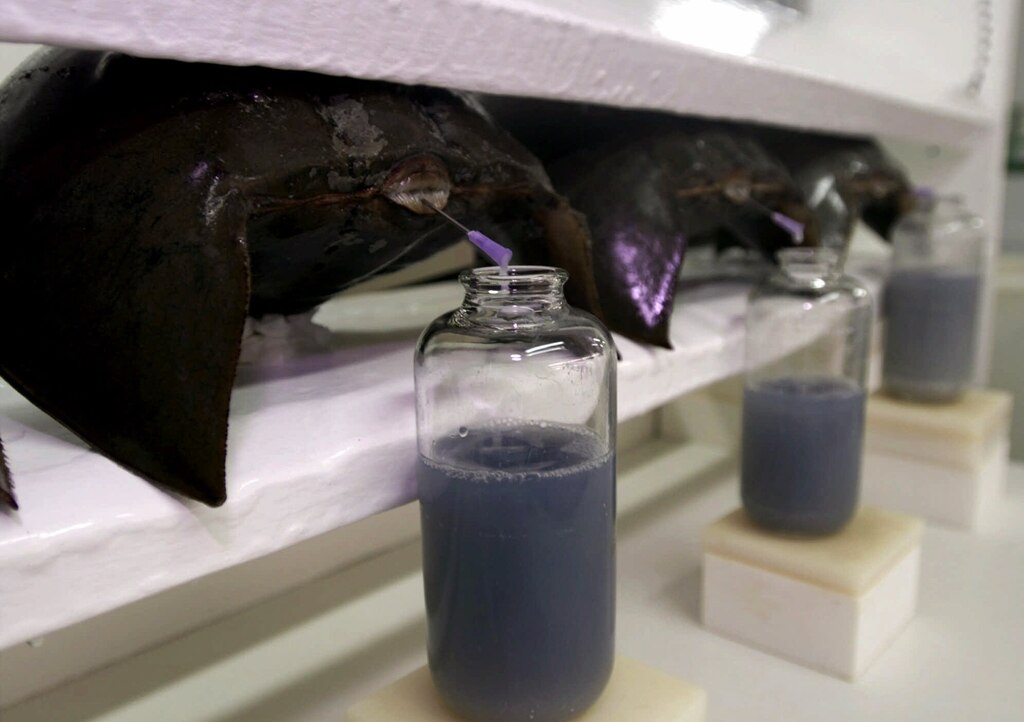Maryland is hiding the number of horseshoe crabs that are killed or bled annually, according to a nonprofit.
The Center for Biological Diversity, a conservation-focused organization, sued the state’s Department of Natural Resources under Maryland’s Public Information Act for “failing to release information detailing exactly how thousands of horseshoe crabs are killed, bled or injured by pharmaceutical companies and fishermen annually.”
The lawsuit was filed May 22 in Anne Arundel County. A spokesperson for the Department of Natural Resources said the department does not comment on active litigation.
The Center for Biological Diversity says Maryland “shrouds in secrecy the process it uses” to determine when and how horseshoe crabs can be harvested. Maryland partners with Virginia to manage how blue crabs are harvested from the Chesapeake Bay; it and other states on the East Coast coordinate and share information on horseshoe crab management.
The Baltimore Banner thanks its sponsors. Become one.
Bill Snape, an attorney representing the Center for Biological Diversity in the lawsuit, said the agency returned documents that had been requested, but redacted a large amount of specific information about where and how many horseshoe crabs were taken and returned to the water in Maryland.
“All we got were the summary tables without any of the underlying data, permits or science,” Snape said.
Read More
The Department of Natural Resources, Snape said, indicated information was redacted because it pertained to confidential business practices.
The species is primarily harvested for two purposes: They’re used as bait, and their blood is extracted for use in the pharmaceutical and medical device industry. When the blood is harvested from the horseshoe crabs, “most” are later returned to the water, but there is an average 15% mortality rate after return, according to the Atlantic States Marine Fisheries Commission.
The blood harvest has almost doubled since 2017, according to the Center for Biological Diversity.
The Baltimore Banner thanks its sponsors. Become one.
Horseshoe crab blood is bright blue and contains cells that are “exceptionally sensitive” to bacteria, according to London’s Natural History Museum. Those cells can be extracted and developed into a test for contamination in vaccines, injectable drugs, IV solutions and medical devices.
Synthetic alternatives are used in Europe but have not been widely adopted in the United States.

Horseshoe crabs have existed on Earth for more than 445 million years, according to the DNR — making the invertebrates older than trees and the Chesapeake Bay itself. By not releasing more details about how many horseshoe crabs die annually, the public cannot adequately advocate for the species’ protection, Snape said.
“Hundreds of species” depend on horseshoe crabs as part of the food web, Snape said, adding that they are “at the center of a beautiful ecosystem.”
“You take a 450-million-year-old cog out, and we’re very worried what will happen,” he said.
The Baltimore Banner thanks its sponsors. Become one.
For example, the red knot is a migratory bird that uses the Delaware Bay as a pit stop for food as it travels from South America to the Arctic, according to the Delaware Audubon Society. They eat horseshoe crab eggs — and as the number of horseshoe crabs in the region has dwindled, it’s harmed the bird’s numbers.
Horseshoe crabs are not, despite the name, a type of crab. Horseshoe crabs are more closely related to ticks and spiders than they are to crabs or other crustaceans.
The Atlantic horseshoe crab lives in shallow waters all along the East Coast, from the Bay of Fundy to the Gulf of Mexico. Individual states manage the fisheries in their territories, and coordinate information under the umbrella of the Atlantic States Marine Fisheries Commission. Maryland — and other states — provide compliance reports to the commission.
For purposes of management by the ASMFC, Maryland’s horseshoe crab fishery is counted as part of the Delaware Bay region. The latest assessment from the commission says the Delaware Bay region’s stock status is “good,” which is considered an improvement from the 2019 assessment.





Comments
Welcome to The Banner's subscriber-only commenting community. Please review our community guidelines.